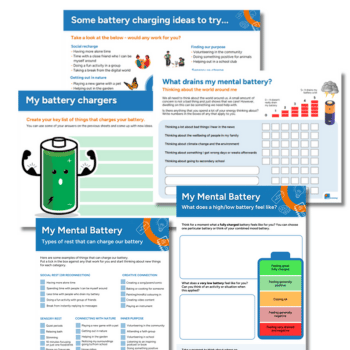6 ways to support students with anxiety

Persistent and excessive worry can have a hugely detrimental impact on young people’s lives, learning and mental health, says John Dabell – but luckily, there are things you can do to help

- by John Dabell

1. Pinpoint
Knowing your students is essential, as this will help in identifying what sets off their anxiety. For example, there may be sensory triggers (eg noise associated with transitions and break times, large gatherings such as school assemblies, etc) that cause stress.
Talk to students privately about how they feel, what situations create issues for them, and what interventions they would find helpful. Discussing symptoms and strategies one-to-one is crucial, as this will help reduce feelings of helplessness.
Make time to chat regularly, and arrange to speak with parents, too, to discuss particular issues and ensure strong, supportive links between school and home.
2. Teach the science
Most students don’t recognise their anxiety for what it is. Rather than see it as something that’s wired into all of us, they may think there is something ‘wrong’ with them, which could make them feel even more self-conscious and anxious.
Communicate openly with your whole class, teaching students about anxiety and how to recognise it. Helping young people understand how and why the brain and body change in certain situations can help them get to grips with their emotions, feelings and responses; and providing accurate information about anxiety can reduce confusion or shame.
3. Adapt to change
Schools operate on timetables – but life is unpredictable, and new, unforeseen events may occur at any time. Changes or interruptions to a routine can be highly anxiety-provoking, particularly – but not exclusively – for students with autism.
Where possible, tell learners in advance about any alterations to their day and week, and attempt to prepare them as much as possible.
Aim to be a calm presence, whilst validating your students’ experiences. Think carefully when introducing new activities as these may make feel students uncomfortable; allow extra time to adjust to any changes.
4. Create a ‘toolbox’
If a student is feeling anxious in class then redirect them to a safe place/calming activity, or encourage the use of coping skills such as deep breathing or positive self-talk.
One way of facilitating this is by creating a ‘toolbox’ of techniques and strategies that students can use in periods of distress.
Such a kit is often referred to as a Stress Box, Coping Skills Box or Comfort Box, and can help students to self-instigate a response so they can maintain control, eg meditation ideas, writing in a journal, sensory soothers (stress balls, fidget cubes/spinners), distractions (music, puzzles, artwork), affirmations, visualisations, etc.
5. Take control
Help students realise that many things are out of their control and sometimes we may have no choice but to accept things the way they are. Support them to reframe their experiences by looking at situations from new viewpoints.
For example, focus on the big picture and adopt a mantra such as ‘I can handle this,’ which they can mentally repeat it in difficult situations. Remind students they can still be in control of their responses and their own minds by practising thought-stopping.
What they focus on, what they spend time thinking about, and what they do can be controlled from within.
6. Teach problem-solving
Students who are anxious are thinking emotionally and not logically, and they need to know this. Problem-solving training helps young people learn a systematic way of approaching challenges so that they are manageable rather than out of control.
For example, when a problem causes apprehension, students may find it helpful to write things down using the following questions:
- What is the problem?
- What are three things I can do to manage it?
- What will happen if I do each of those things?
- Which way of managing it is the best?
- Can I do anything differently next time?
… and one for luck
Remember, professional assistance should be sought if a student’s anxiety is causing them significant distress; and that goes for you, too.










